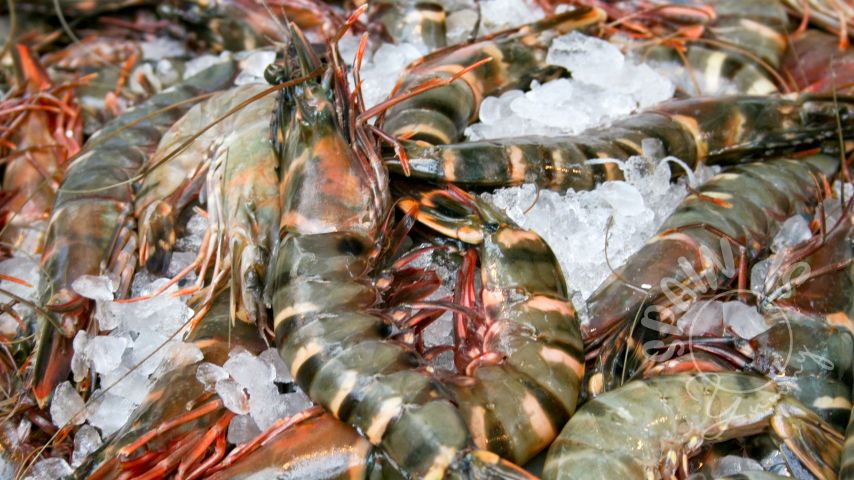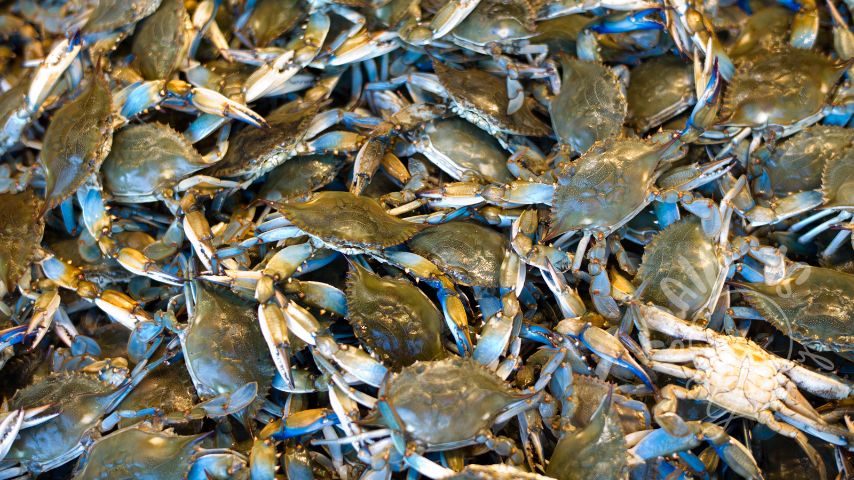Welcome to Sanlucar de Barrameda, a charming coastal town in the province of Cadiz, known for its beautiful beaches, rich history, and delicious cuisine. As a visitor to Sanlucar, you have the opportunity to experience the town’s unique culinary offerings, including its world-famous Sanlúcar prawns.
Sanlúcar prawns are a local delicacy that has gained worldwide recognition for their exquisite flavor and quality. These prawns are caught in the Guadalquivir River estuary, located just off the coast of Sanlucar, and are renowned for their sweet taste and tender texture.
As you explore the town, you will notice that many of the local restaurants feature Sanlúcar prawns prominently on their menus. From traditional seafood shacks to upscale fine dining establishments, there is no shortage of options when it comes to enjoying these delectable crustaceans.
Whether you prefer your prawns grilled, boiled, or fried, you are sure to savor every bite of Sanlúcar’s finest seafood. So, come join us and experience the taste of Sanlucar de Barrameda through its world-famous prawns.


Sanlúcar prawns
The Sanlucar prawn, scientifically known as Penaeus kerathurus, is a highly valued native species that breeds in the estuary of the Guadalquivir River near the Doñana National Park. It is considered one of the stars of Cadiz cuisine and has gained popularity among tourists and renowned chefs worldwide.
The prawn’s succulent meat is best consumed fresh, and its high demand contributes to its high price, particularly during the summer months and the Christmas season. In the sixteenth century, the price of Sanlucar prawns was one pound, while in the seventeenth century, it was around 8 maravedíes. Nowadays, the cost varies between 40 and 60 euros per kilogram, depending on the season.
In Sanlúcar de Barrameda, the prawns are commonly referred to as Sanlúcar shrimp, emphasizing their exceptional taste and quality, which is attributed to their origin from the Sanlúcar area. On the other hand, in Rota and Chipiona, large specimens of the prawn are called Pabloromeros due to their resemblance to the prestigious bullfighting livestock of Pablo Romero.


Sanlucar de Brrameda shores
The Langostino de Sanlúcar Brand:
In 2014, the Fishermen’s Guild established the brand Langostino de Sanlúcar and commissioned a scientific study to support its differentiation as a product. The focus of the study was on prawns from Sanlúcar, Castellón de la Plana, Tunisia, and Morocco. The genetic analysis revealed notable differences, and with a small sample of four or five specimens, it was possible to determine with a high degree of certainty if they were from the Gulf of Cadiz.
The intense flavor of the Sanlúcar shrimp can be attributed to its breeding grounds, located at the mouth of the Guadalquivir River, adjacent to the Doñana National Park. During the day, the prawn hides in the sand and emerges at night to feed on algae and small crustaceans. This unique nutrition, combined with the characteristics of the surrounding waters, imparts a distinctive flavor to the product.
Furthermore, the physical attributes of the Sanlúcar shrimp make it easily distinguishable from those caught in other fishing areas. Its mustache can be used to catch it without breaking, and its tail boasts a rainbow of colors, including an eye-catching blue hue. These characteristics make the Sanlúcar shrimp a highly sought-after and prized delicacy.
What is Chiguato?
In the growth process of a shrimp, it molts its exoskeleton to accommodate its growing body. The process is quick, taking only five to six minutes for the shrimp to shed its old shell and reveal its new, still soft skin. However, if the process is unsuccessful, the shrimp may either die or become prey for other shrimps. The chiguato, a shrimp with a soft shell, has recently gained popularity in gastronomy and can be consumed without being peeled. Previously, it was not even offered for sale at auction.
José Ángel Rodríguez, owner and head waiter of the Avante Claro restaurant, advises that chiguato is not suitable for boiling but is perfect for frying or stewing. When fried, it is consumed whole without the need to remove its head, as its membrane is very thin. When stewed with tomato or skewered in chamomile tempura, chiguato is a delicious delicacy.


Sanlúcar Prawns,Kings of biological adaptation
Sanlúcar Prawns posess a unique ability to adapt to changes in water salinity. This ability is achieved through a process that enables the crustacean to expel ions or water, thus achieving balance.
However, the organism is sensitive to temperature changes, and during the winter months, it relocates to deeper waters where there is less fluctuation in temperature. This is just one of the many adaptations that this crustacean undergoes throughout its life.
Although this organism prefers shallow waters, typically found between 5 and 40 meters deep, it changes its habitat during the reproductive season. During this period, the crustacean frequents muddy bottoms. In contrast, for the remainder of the year, it prefers sandy bottoms. It is worth noting that the juveniles of this organism can be found living in the mouth of the Guadalquivir.
Life Cycle of Sanlúcar Prawns
The life cycle of Sanlúcar prawns begins with the females laying their eggs at night in the open waters near the river mouth. After the eggs hatch, the larvae go through a developmental phase before becoming juveniles. These juveniles then begin to migrate up the river until the onset of autumn, when a drop in water temperature prompts them to return to the warmer waters of the Gulf of Cadiz. In these waters, the juveniles complete their growth and remain until the next laying season.
Production and Fishing
The production of Sanlúcar prawns, which is associated with the three ports of Sanlúcar Bonanza, Chipiona, and Rota, averages between 120-140 tons per year. The fishing fleets of these ports operate in nine fishing grounds located off the coast of Doñana.
The fishing grounds, which are delimited by two old beacons – the Torre de Zalabar and the Torre del Oro – are situated up to six miles offshore and include areas such as La Higuera, Las Arenas, Cuerpo de las Arenas, Matalascañas, La Barrosa, Las Veinte, De Canto a Canto, El Chucho, and El Inglesillo.
The Sanlúcar Shrimp catch reaches its peak during the spring and early summer months, particularly in June. There is a slight increase in the autumn due to the recruitment of spring spawning from the canals and the lower stretches of the Guadalquivir River. However, these prawns are caught throughout the year.
The Sanlúcar fish market sells the largest quantity of these prawns, with an annual catch of approximately 90,000 kilograms, according to the Fishermen’s Guild’s data.




Torre de Zalabar
Torre del Oro
Trawling Fishing of Langostinos de Sanlúcar
The most commonly used fishing method for catching Sanlúcar prawns is trawling. This involves using cone-shaped nets that are closed by a codend or bag, which widens at the mouth with bands or wings and is dragged and towed by a boat. The nets are pulled along the seabed where the prawns are found, feeding on plankton and filtering sand.
To protect the lower edge of the net from damage, a thick weighted line is used when trawling close to the seabed. The male prawns are usually found at the bottom of the sea, while the females tend to swim closer to the surface and filter less sand. As a result, female prawns are typically caught by trammel boats that cast their nets at shallower depths.
To distinguish trammel shrimp from other types, it’s useful to examine the eyes of the shrimp. If they have their eyes, then it’s likely they were caught by trawlers. It’s common for alba shrimp caught in nets to lose some of their eyes.


Trawling fishing nets
Trammel Nets and Dawn Prawns
Trammel nets are a type of fishing gear that is placed on the bottom of the sea and consists of three netting panels. The two outer panels are made of clear mesh and are mounted so that their meshes coincide, while the central panel hangs from the surface of the sea using floats. These nets are placed parallel to the coast and are collected after a few hours at depths ranging from two to eight fathoms, catching the specimens that have become entangled in them.
The dawn prawn is a type of prawn caught at dawn using trammel nets. Fishermen who catch dawn prawns go out at dawn and use small boats, resulting in a smaller catch. However, the prawns caught are very fresh because they are still alive when they are taken to the boat. The main advantage of catching prawns this way is that they are caught in the middle zone rather than at the bottom of the sea, which means they have less sand, something unpleasant in shrimps, and that can happen with trawlers. The alba prawn is not abundant, making it a coveted catch.
Sanlúcar de Barrameda Prawns Under Threat
Sanlúcar de Barrameda’s shrimps are facing a new threat posed by the arrival of four exotic decapod crustaceans in the Gulf of Cadiz over the last five years. These species include the African pistol shrimp, the West African cleaner shrimp, the giant tiger prawn ( picture below) , and the blue crab.
The Gulf of Cadiz is considered a hot spot for exotic species due to the intense transportation of goods by ships in the region’s ports, an increase in seawater temperature, and major anthropogenic changes in the coastal area. Seawater warming in particular appears to favor the establishment of African species in the area. It is crucial to identify the main regional vectors and potential environmental damage caused by these exotic species in order to mitigate their introduction and protect Sanlúcar’s native shrimp population.




The giant tiger prawns and the blue crans are among the species that pose a direct threat to the Sanlucar de Barrameda prawns.
Where to enjoy Sanlúcar Prawns?
There are several restaurants in Sanlúcar de Barrameda that offer Sanlúcar prawns, including Casa Bigote, La Pañoleta, and El Mirador.
If you are in Spain but not in the Huelva region, you can still enjoy these wonderful prawns through online shops like El rincón de Huelva.
